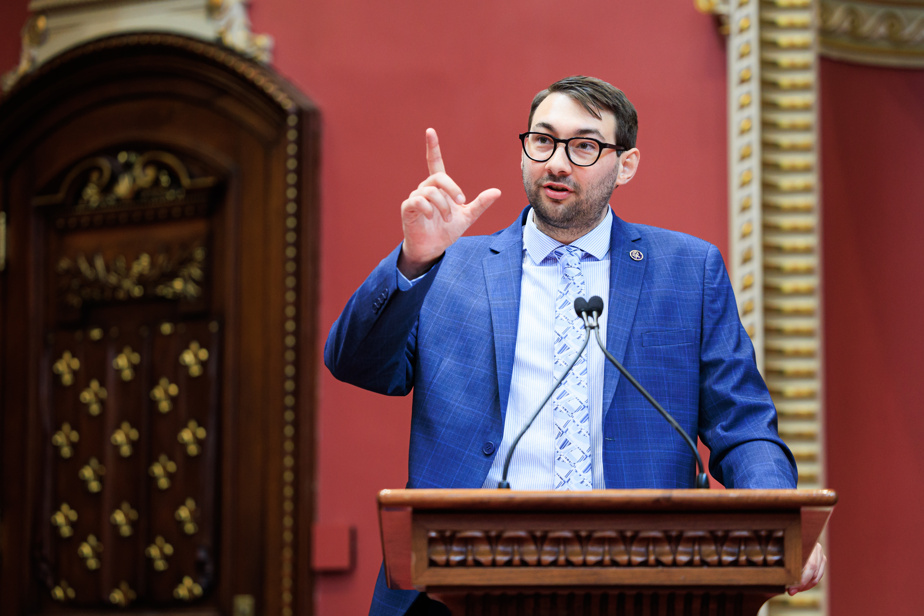(Quebec) The question of immigration and the housing crisis continues to provoke strong reactions in Quebec. The solidarity Guillaume Cliche-Rivard and the PQ leader Paul St-Pierre Plamondon launched into a war of numbers on social networks, while accusing each other of polarizing the debate.
Wanting to reestablish “certain facts” on immigration, Guillaume Cliche-Rivard claims to have “seen political leaders turning corners while others are completely twisting the facts”.
“To hear them, the main cause of the housing crisis is not real estate speculation, evictions, or even declines in construction starts. No ! For them, the main cause of the housing crisis, suddenly, is immigrants,” he wrote in a long missive on Facebook.
We learned last week that housing starts had decreased by 32% in Quebec in 2023.
Incidentally attacking the federal Liberal Party, and its desire to welcome “500,000 permanent immigrants to Canada in 2025”, Mr. Cliche-Rivard denounces the fact that the PQ is considering “further reducing its already very low target of 35,000 people per year.
According to him, the will of the Parti Québécois (PQ) would have “a disastrous impact, not only on the economy of Quebec, but also on the lives of hundreds of thousands of people who have chosen Quebec”, in particular by slowing down their process to obtain permanent residence.
Québec solidaire (QS) proposes permanent immigration thresholds between 60,000 and 80,000 per year.
“Quebec has nothing to gain if the discussion around immigration takes a polarizing turn. In fact, the only ones who have anything to gain from it are those who think they can move the polling needle with it,” he wrote at the end of his message.
Last week, another solidarity MP, Haroun Bouazzi, also attacked the Parti Québécois on “, he wrote among other things.
PSPP replies
The PQ leader, visibly stung, responded to QS on the social network
“Québec solidaire claims to want to prevent the debate on immigration from taking a polarizing turn, but is doing everything to polarize this subject,” said Paul St-Pierre Plamondon.
“Rather than discussing immigration thresholds like the other parties do, they try to make people believe “that we blame immigrants”, “that there is only one culprit, the Other, the immigrant”, “that immigration is the problem”. But no one says this, except QS, which is trying to extract a small political profit by creating a climate of fear,” he added.
The PQ leader affirms that we must see immigration as a “macroeconomic phenomenon” rather than in an “individual” way.
“The impact on housing, services or language is not linked to individual immigrants, but it is linked to our public policies in this area. There is already a shortage of 1.2 million homes by 2030 and QS is proposing to make the situation worse. Homelessness is on the rise more than ever and many of these new homeless people are immigrants who recently arrived in the country,” he wrote.
Paul St-Pierre Plamondon also defends himself by affirming that his party offers solutions “to counter real estate speculation and respond to the consequences of the housing crisis”.
“(The PQ) is the only party not to bury its head in the sand when the time comes to talk about the question of housing demand which is stimulated by record immigration thresholds,” indicates the PQ leader.
The two parties also have opposing views on the issue of temporary immigrants. While QS affirms that their increase in Quebec is notably linked to the shortage of workers, the PQ instead maintains that, according to economists, “the effect of immigration on the labor shortage is zero”.
There are currently more than half a million temporary immigrants in Quebec.
Last Wednesday, Paul St-Pierre Plamondon said that his party would reassess its permanent immigration thresholds, currently set at 35,000 new arrivals per year, arguing that the situation had changed significantly since the last election.
Last week, Quebec Premier François Legault sent a letter to Justin Trudeau urging him to curb the influx of asylum seekers or else Quebec will reach its “breaking point.”
